
News
Drones and AI to support fisheries inspectors
The fisheries inspectors of the Dutch Food and Consumer Product Safety Authority (NVWA) are working to combat eel poaching in the Netherlands. The illegal catching of eels threatens the critical eel stock. In addition, these eels may contain dangerously high concentrations of the carcinogen dioxin. The eel poachers usually use traps to catch the eel. These nets can be detected by fisheries inspectors by dredging. A hook is dragged over the bottom with the aim of anchoring itself with a trap. This process can be very time consuming. In research by the NVWA (led by Rob Broekman), Department of Trade & Digital Supervision, in collaboration with the Chair group Information Technology of Wageningen University and Research (led by João Valente), an alternative method has been developed to detect traps of eel poachers.
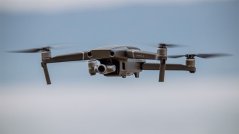
In recent years, drones have proven to be very effective in the field of surveillance and inspection. On difficult terrain, a drone can easily travel and map long distances. In addition, a drone offers a unique and valuable perspective. For example, the health of trees in a forest can be mapped more efficiently and faster by means of a drone. A drone also has a lot of potential in detecting barrels. When barrels are in clear water, they can be clearly seen up to 4 meters deep on drone footage. In general, traps are not placed much deeper by eel poachers. That is why drone footage can be used effectively by inspectors to detect illegal traps.
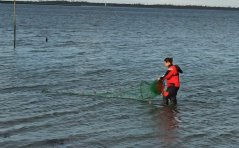
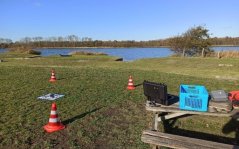
To prevent the inspector from having to go through thousands of photos or hours of image material in search of one trap, an Artificial Intelligent (AI) algorithm was developed. When an AI is well trained, the traps in the photos can be detected by the computer. To train an algorithm, thousands of photos are entered, with and without a trap in the picture. In addition, the photos must have been taken under various weather conditions and of different traps. As a result, the AI becomes familiar with different scenarios.
The photos of the barrels were collected by André de Wit (former MSc intern, WUR) and Leendert Schneider (fisheries inspector) in Zeeland, in November 2020. The barrels were placed in the water at several locations in Zeeland, after which a drone was used to fly over them.
When nets blend in the background or where high waves disturb the image, the AI can detect the trap better than humans can.
In total, more than 6000 photos were taken. Subsequently, these photos were used to successfully train the AI algorithm. The AI is now able to effectively detect traps in drone images in a wide range of circumstances. In specific cases where the nets blend in the background or where high waves disturb the image, the network is better at detecting the traps than people are.
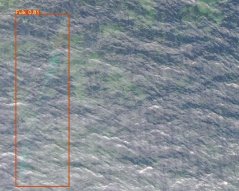
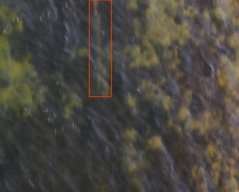
The use of drones and AI to find traps depends heavily on the brightness of the water. Drones will not take over the detection of barrels with the help of dredges. However, a drone can be used to support the inspector. Since the inspectors know the waters of their working area very well, it is bestfor them to knowwhether the use of a drone is useful. The AI will be usable on 14 April 2021 and transferred to the NVWA drone pilots/ inspectors. The next step will be to develop a mobile app that can control the drone and integrate the AI. In the long term, this app can be used for multiple functions within the fisheries inspection. Think of checking whether the right equipment is used in professional fishing. The use of drones and AI will significantly reduce the pressure on inspectors in the future, creating more room for them to better protect Dutch nature.